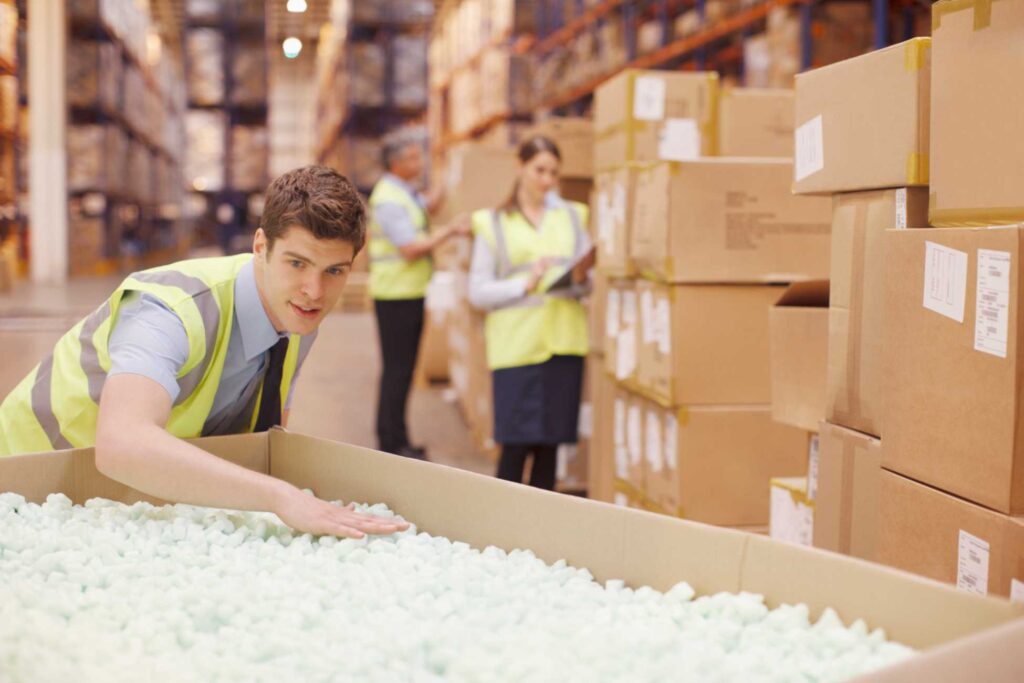Different Types of Packaging Foam and Choosing the Right One
Choosing the Right Packaging Foam Type
One of the most important tools used to secure products during shipping is packaging foam. There is a wide range of different types of packaging foam, and the one you choose will depend on the size, weight, fragility, and value of the item being shipped, as well as the shipping method and distance. Here is a closer look at the different types of packaging foam so that you can choose the right one for your needs.

What to Consider When Choosing Packaging Foam
There are many different factors to consider when determining the best type of packaging materials for properly crating or boxing your products. Some key considerations are:
- Weight and Size – First, consider the size and weight of the object or objects you are shipping. Small, fragile objects may need a denser packaging foam. Larger or heavier objects may need molded or custom foam inserts for packaging stability.
- Fragility – Next, consider how fragile your items are and how easily they can be damaged. Delicate items require high-performance and shock-absorbing box foam packaging.
- Method of Transportation – Next, consider how your goods will be transported and the challenges or obstacles they may face along the way. Domestic shipping via truck may be less taxing than shipping via air or sea.
- Transportation Distance – Then, consider the distance the item will have to travel. If it is being sent via international shipping, you may need more robust packaging foam for added protection and security.
- Shipping Regulations – You also must consider domestic or international shipping regulations. Some countries have stringent requirements for packaging materials or may ban the use of certain materials.
- Environmental Concerns and Sustainability – You should also consider environmental factors that could affect the safety of your packaging or the items inside. Moisture, weather, and extreme temperatures can affect packaging, and you may need one with thermal insulation. You should also consider sustainability to reduce environmental impact, such as recyclable or reusable packaging foam.
- Budget – Of course, you will also have to consider your budget and weigh the benefits of quality packaging materials against the added cost.
- Static Sensitivity – If you are shipping electronics or other items that have static sensitivity, you will need to choose anti-static foam.
- Custom Needs – You may also need to consider custom packaging needs. Custom-cut foam inserts can offer the best protection for certain items.
Dangers of Not Using the Right Material for Crating & Packaging
When you use the wrong material for crating and packaging, there is a much higher risk that your items will be damaged during transit. Some of the dangers of not using shock-mounting or packaging cushioning include:
- Physical damage to your product
- Customer returns or dissatisfaction
- Lost or destroyed product
- Increased packaging costs
- Shipping delays
- Vibration or shock damage
- Environmental damage
- Damage to your reputation
- Regulatory and compliance issues
- Theft and security risks
- Logistics and operational inefficiencies
Most Common Types of Packaging Foam
In addition to all other considerations, you should also be familiar with the different types of packaging foam available. This will help you better understand which one to use for each item you are shipping:
- Expanding Foam Packaging – Expanded polystyrene foam or EPS foam packaging is a rigid yet lightweight foam. It is ideal for packaging certain electronics, glassware, decor, furniture, and other heavy or fragile items.
- Polyethylene Foam – PE foam is strong, dense, and durable. Using polyethylene foam for packaging can offer shock absorption and protect a wide range of different-sized and weighted items. It is also recyclable.
- Polyurethane (PU) Foam – PU foam is soft, spongy, and resilient. It is typically used to create custom packaging inserts to protect smaller, more delicate items.
- Cross-linked Polyethylene (XLPE) Foam – This is a premium, high-density foam that provides superior protection. It offers shock absorption and added safety for Class A products like medical devices, scientific and laboratory equipment, and military equipment.
- Anti-Static Foam – Anti-static foam packaging protects electronics and electronic components from static discharge.
- Foam Sheets, Rolls, and Pouches – Foam sheets, rolls, and pouches are used for a wide range of custom or small-item packaging needs.
- Pick and Pull Foam – Pick and pull foam is a grid-like foam that allows you to create custom cutouts that fit precisely around smaller and more fragile items.
- Rigid Molded Foam – Rigid molded foam is custom-made to protect items of any size or weight and fits precisely around each component for added protection and stability.
Call Us for Custom Crating and Packaging Solutions
Bay Area Crating Services offers custom crating and packaging solutions for residential and commercial customers. We specialize in unique, oversize, complex, and fragile shipping solutions and provide domestic and international crating and shipping of furniture, art, electronics, equipment, and more. We also provide custom solutions for shipping medical and scientific equipment, as well as heavy or oversized items, and offer anti-static packaging, clean room crating, and on-site crating services. Call us now or contact us online to get an estimate for custom crating and custom foam inserts for packaging.
